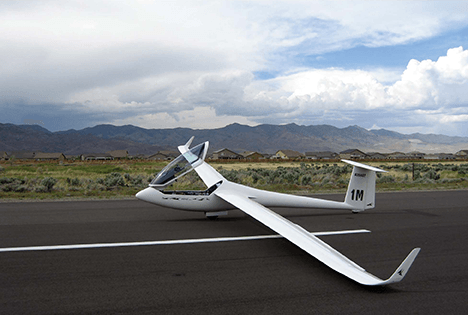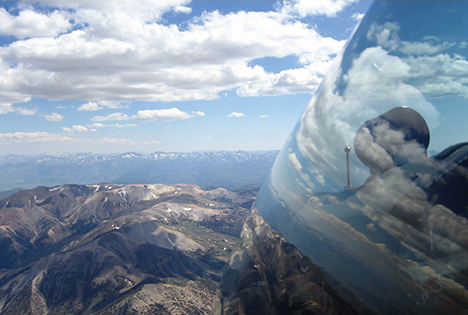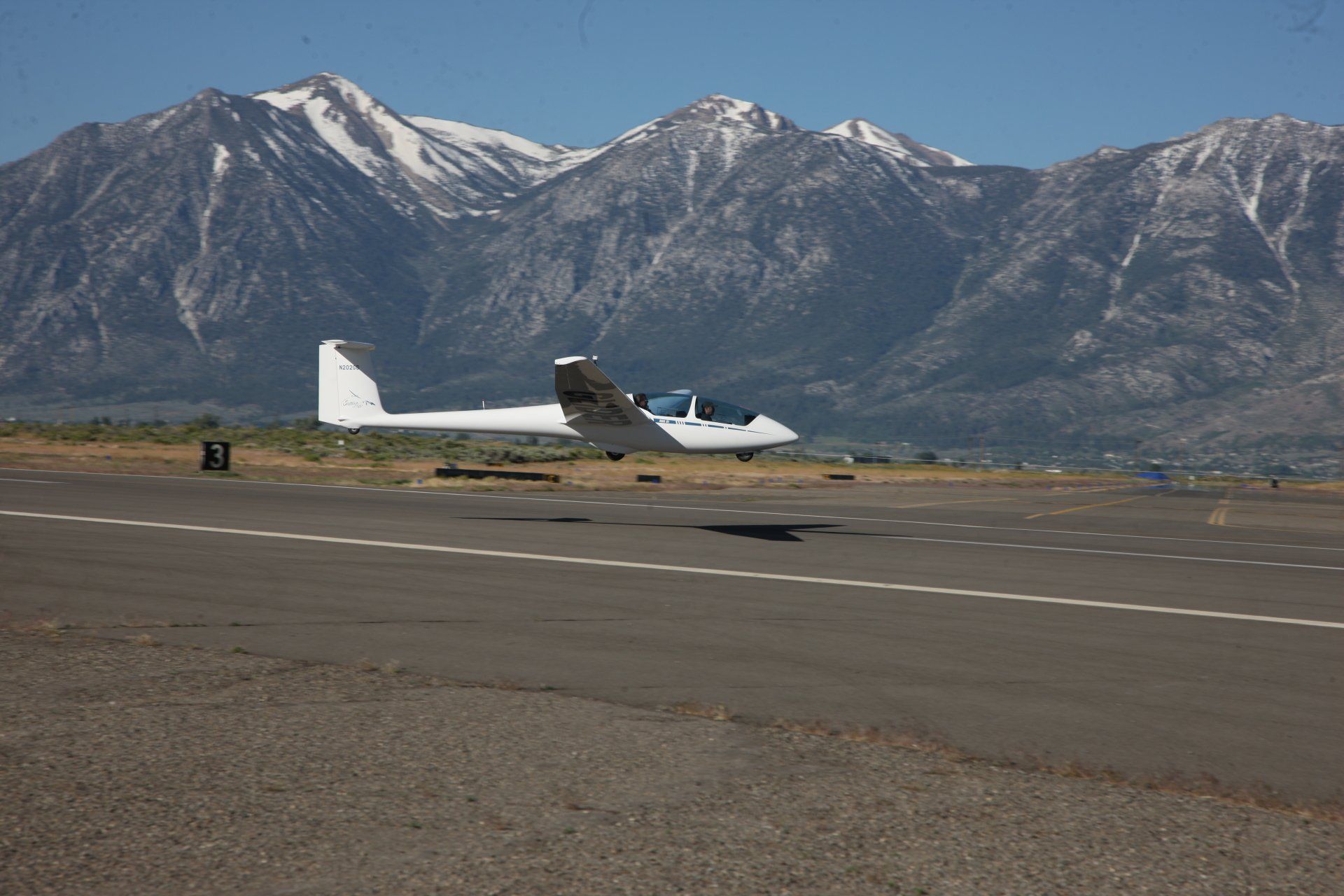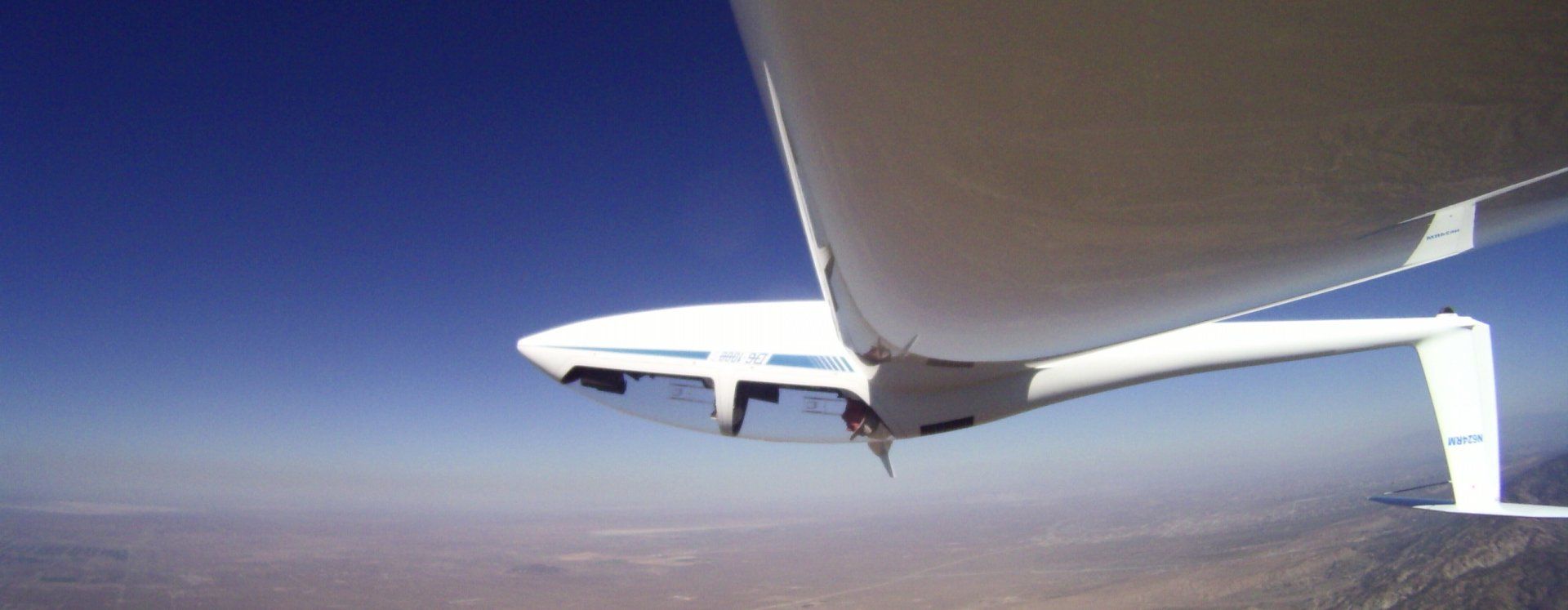

The Sport of Soaring

A modern sailplane is an amazing machine, capable of flying over 45 feet forward for every foot it descends. Newer gliders are made of fiberglass, carbon fiber, and Kevlar, while older models can be made of aluminum or even wood and fabric. Some gliders have flaps, which can both decrease the landing speed, and increase performance at high speeds. They can also carry water ballast, to make them heavier, which again can help improve their performance at high speeds. The water ballast is dumped before the glider comes in to land. A glider can be taken apart and put in a trailer for storage and transportation. An experienced crew can get a glider put together or taken apart in about 20 minutes.

Most gliders in the U.S. are launched by aerotow. A powered airplane tows the glider up to altitude using a rope, which the glider pilot releases when at a comfortable altitude. On a good soaring day, you only need to tow to a couple of thousand feet high. From there you can find lift, or rising air, to climb in. A winch can also launch gliders. In this method of launching, a long cable is attached to the glider, and it is towed into the air like a kite. The entire launch by winch, from ground level to a couple of thousand feet, only takes a few seconds. Self-Launching gliders, or motor gliders, have engines or electric motors that allow them to take off on their own power. Once the pilot gets to the desired altitude, the propeller and engine are retracted, and the aircraft returns to being a pure glider.

Once in the air, the pilot seeks out rising air, referred to as “lift”, to stay aloft, and climb. There are different types of lift available to the glider pilot. Thermal lift is the result of warm air at the surface rising because it is less dense than the air around it. The white puffy cumulus clouds you see on a summer afternoon are the tops of thermals that originated at the surface. Sometimes wind climbs up a ridge or mountainside. Glider pilots refer to this rising air as ridge lift. Ridge lift can be very consistent and can allow glider pilots to fly hundreds of miles without losing any altitude. Under certain conditions, when there are high winds aloft, atmospheric waves can form downwind of a mountain range. These waves can increase in amplitude as you climb higher. In certain parts of the country, it is possible to climb to altitudes of more than 25,000’ in wave. It’s not unusual for a pilot to use multiple types of lift on a single flight.

When it’s time to land, spoilers, or airbrakes, are used to control the descent of the glider. With a little practice, you’ll be able to touch down within inches of your target.

So, why do we fly gliders? Flying a glider is just plain fun. If you want to fly to enjoy being in the air, soaring can’t be beaten. Soaring is also one of the most economical forms of aviation. Because they have almost no moving parts, gliders are much less expensive to maintain than airplanes. Also, because of the large wings and light weight, gliders land at lower speeds than airplanes, which reduces the damage or injury that can result from a botched landing. Of course, as with any form of aviation, soaring is as safe as you make it. Learning the proper skills, having a strong foundation of knowledge, and developing good judgment is essential to safety.

So, what can you do after you get your license? Flying for fun, by taking local flights at your home airport, and seeing how long you can stay up, or how high you can go, is a great way to develop your skills. Once you’ve gain experience at working lift, the natural next step is to start flying cross country. On cross country flights, pilots cover a long distance by alternately climbing in lift, then gliding. Cross country flights often cover several hundred miles. Once you get good at flying cross country, you might want to test yourself against other pilots by flying in contests, or races. In races, glider pilots are assigned a course, which the must fly around before returning to the airport they started from. GPS recording is used to determine the gliders speed, and to verify the pilot made it to all of the turn points. A course is typically 100-300 miles long. A contest lasts several days, with a different task, or course, flown each day. For the thrill seekers, there’s aerobatics. Many gliders are capable of loops, rolls, and even inverted flight. Learning aerobatics is a great way to improve your skills and confidence as a pilot, but they should only be attempted under the instruction of a qualified aerobatic instructor.
